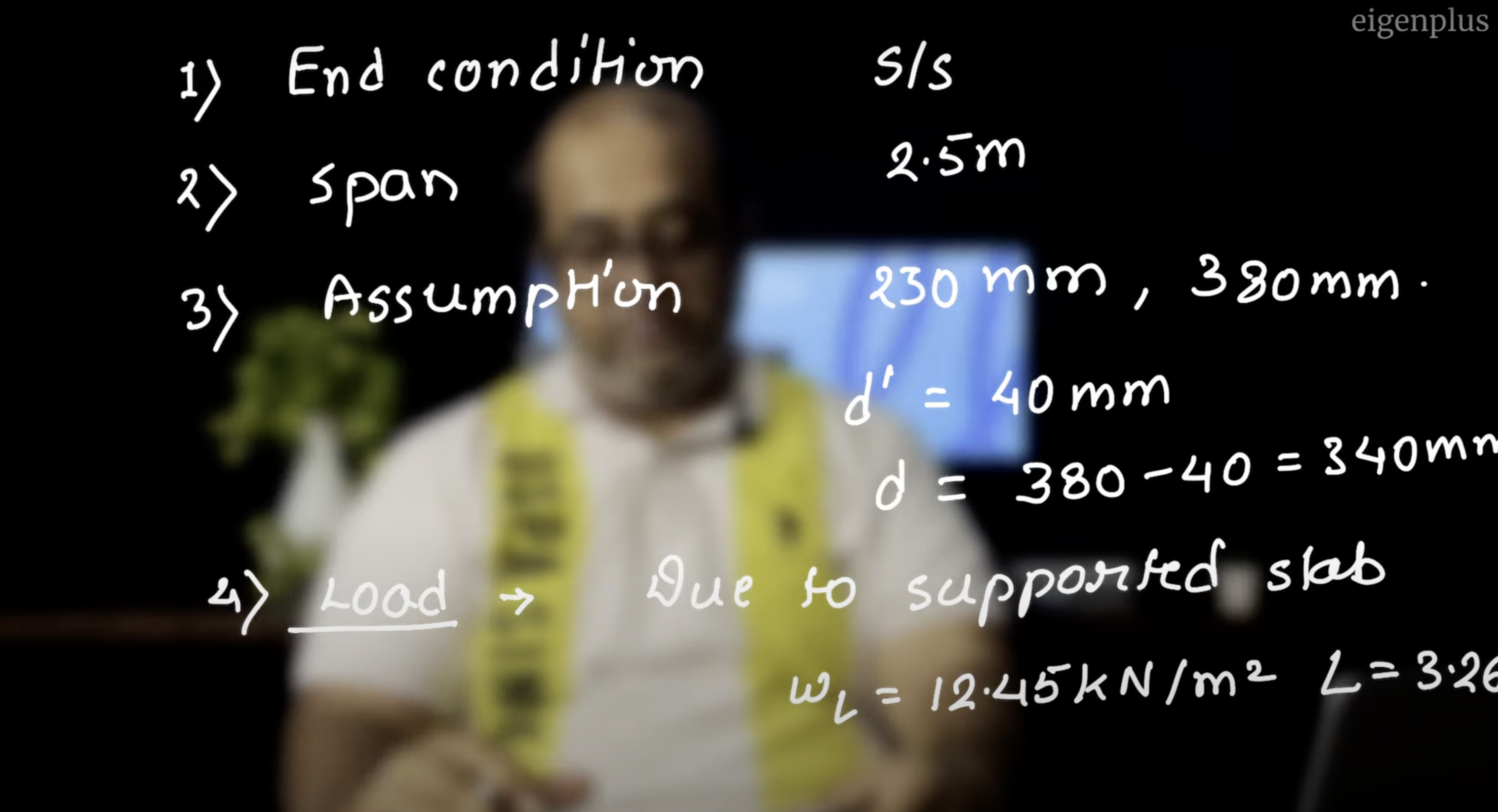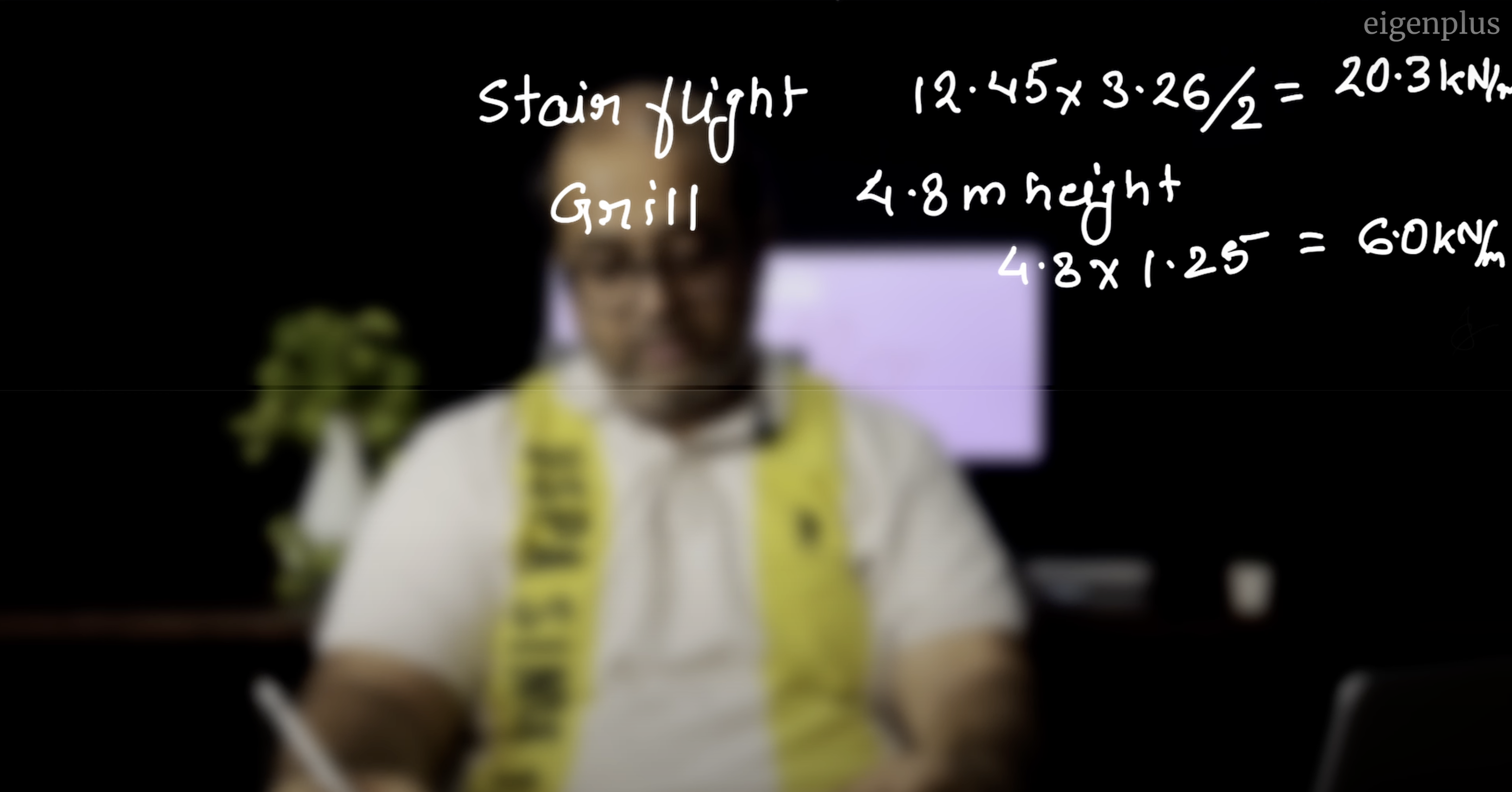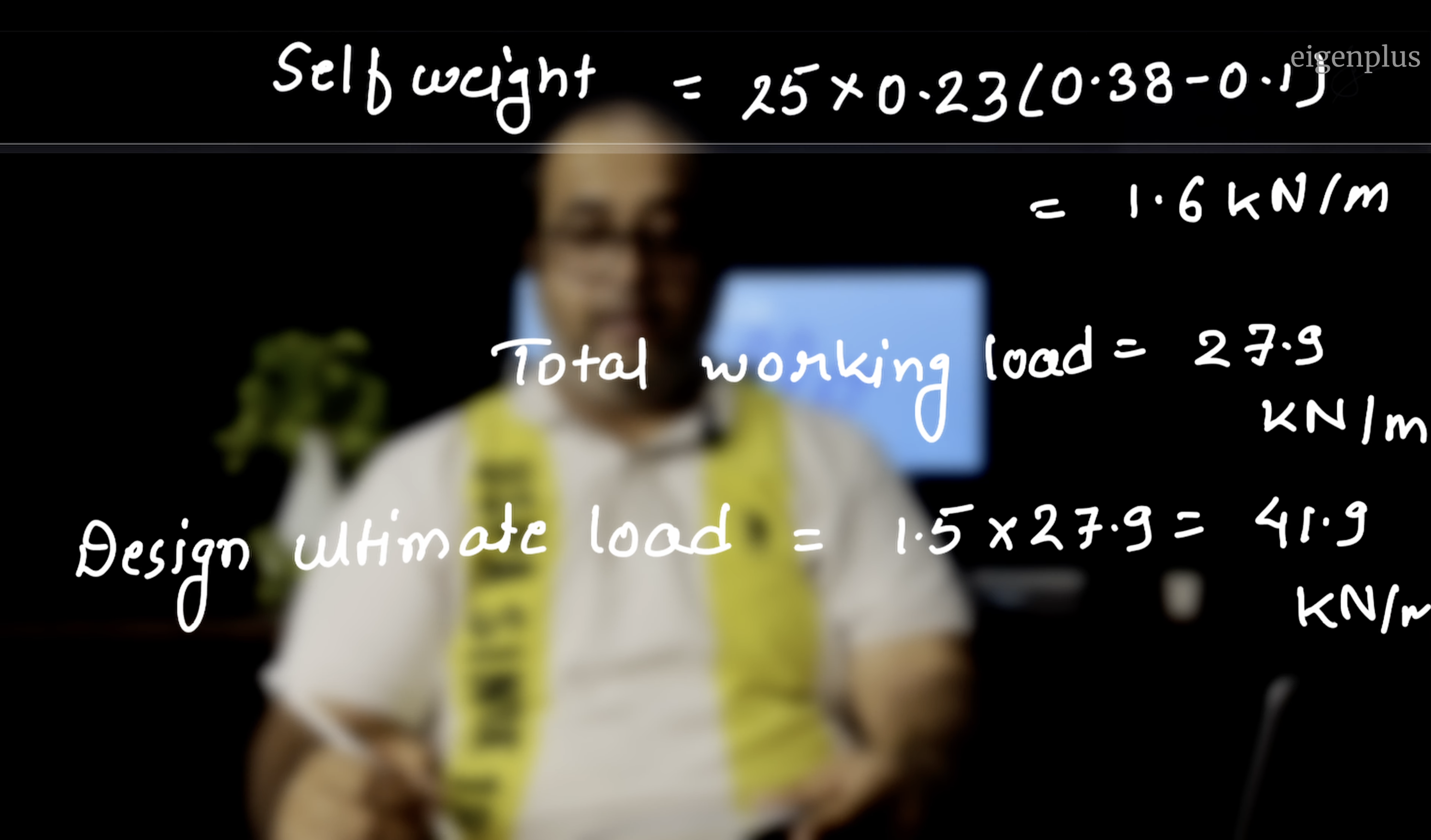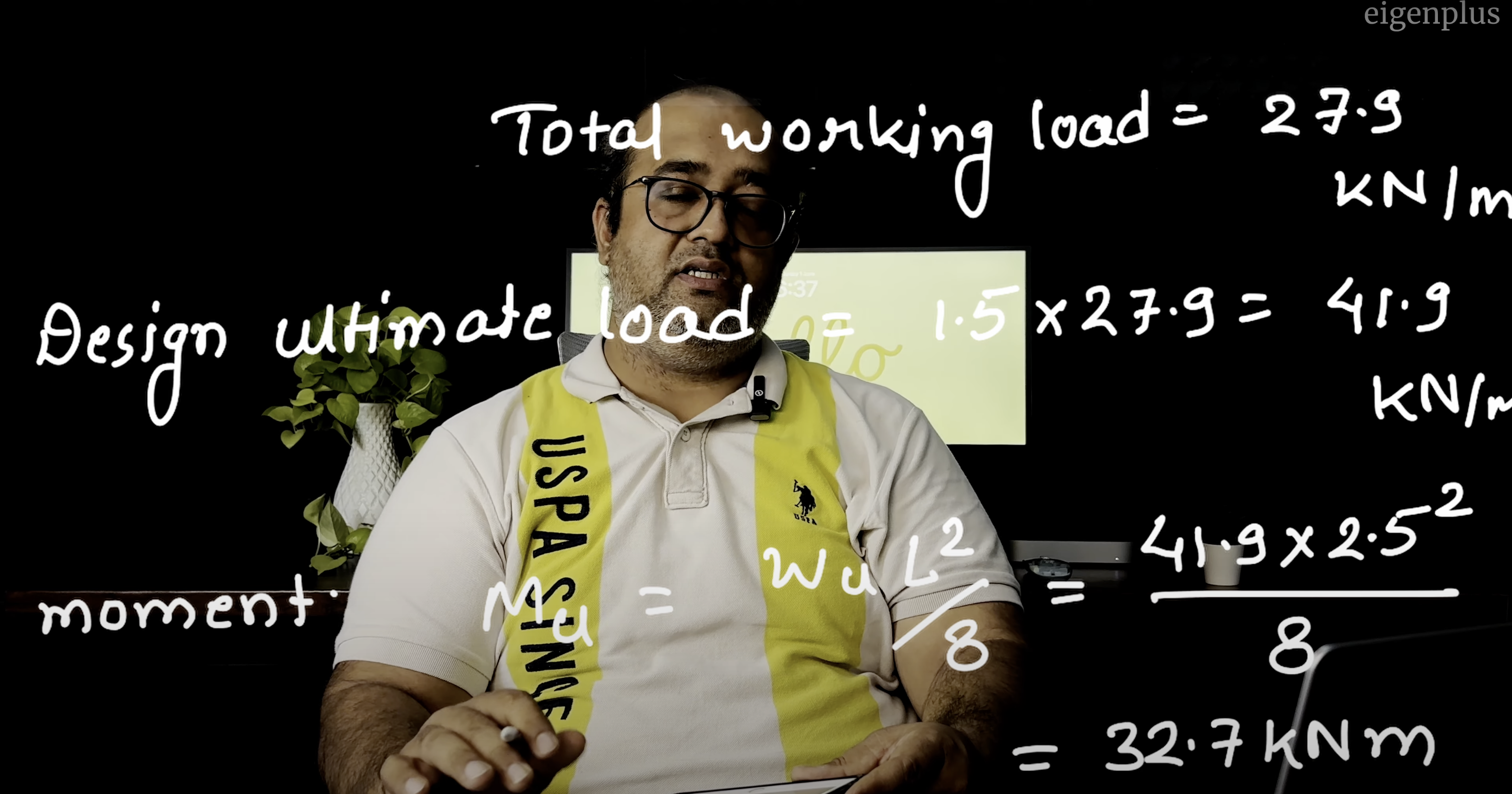Welcome to EigenPlus! In this blog post, we’ll take you through the process of calculating the load on a beam. We’ll go through each step and discuss what we’ve decided for our beam in this project.
Basic Data in Beam Design

End Condition of the Beam
The end condition of our beam, as discussed, is simply supported. This is an important initial consideration as it affects how the beam will behave under load.
Span of the Beam
The span of the beam is 2.5 meters, as specified in the project drawing. This distance is crucial for determining the beam’s load capacity and design requirements.
Assumptions for Beam Design
To proceed with the design, we need to make some assumptions:
- Width of the Beam: We assume a width of 230 mm. This dimension is chosen because it matches the width of the brick wall, ensuring the beam aligns flush with the wall.
- Depth of the Beam: The depth of the beam is assumed to be 380 mm.
- Clear Cover: Typically, a clear cover of 20 mm is used. However, in our case, we are using a clear cover of 40 mm.
- Effective Depth: The effective depth of the beam is calculated by subtracting the clear cover from the total depth: 380 mm – 40 mm = 340 mm.
Calculating the Load on the Beam
Load Due to Supported Slab
The load due to the supported slab is calculated as follows:
- Load (WL): 12.45 kN/m²
- Length: 3.26 meters
$$
\text{Load} = 12.45 \times 3.26 = 40.57 \text{ kN/m}
$$
Load Due to Stair Flight
The load due to the stair flight is calculated as:

$$
12.45 \times \frac{3.26}{2} = 20.3 \text{ kN/m}
$$
Load Due to Grill
We can calculate the total load due to grill depending on its height:
- Height: 4.8 meters
- Load: $4.8 \times 1.25 = 6.0 \text{ kN/m}$
Self Weight of the Beam

We can calculate the self weight of the beam using the concrete weight given in IS Code
- Unit Weight: 25 kN/m³
- Width: 230 mm (0.23 meters)
- Depth: 380 mm (0.38 meters)
$$
\text{Self Weight} = 25 \times 0.23 \times (0.38-0.1) = 1.6 \text{ kN/m}
$$
Total Working Load
The total working load on the beam is the sum of all individual loads:
$$
\text{Total Working Load} = 20.3 + 6.0 + 1.6 = 27.9 \text{ kN/m}
$$
Design Ultimate Load
To design the beam, we need to consider the factored load. Hence, we can calculate the design ultimate load by multiplying the load by 1.5:
$$
\text{Design Ultimate Load} = 1.5 \times 27.9 = 41.9 \text{ kN/m}
$$
Calculating the Design Moment

We can calculate the design moment ($M_u$) for a simply supported beam using following formula:
$$
M_u = \frac{W_u \times L^2}{8}
$$
Where:
- $W_u$ is the design ultimate load (41.9 kN/m)
- $L$ is the span of the beam (2.5 meters)
$$
M_u = \frac{41.9 \times 2.5^2}{8} = 32.7 \text{ kNm}
$$
Calculating the Design Shear Force
The design shear force ($V_u$) is:
$$
V_u = \frac{W_u \times L}{2}
$$
Where:
- $W_u$ is the design ultimate load (103.58 kN/m)
- $L$ is the span of the beam (2.5 meters)
$$
V_u = \frac{103.58 \times 2.5}{2} = 129.475 \text{ kN}
$$
Conclusion
These calculations provide the shear force and bending moment acting on the beam. In the next blog post, we will use these values to design the beam and determine the required reinforcement.
For more videos and detailed walkthroughs on topics like this, visit www.eigenplus.com. Thank you for reading!
This article was crafted by a group of experts at eigenplus to ensure it adheres to our strict quality standards. The individuals who contributed to this article are:
Author


